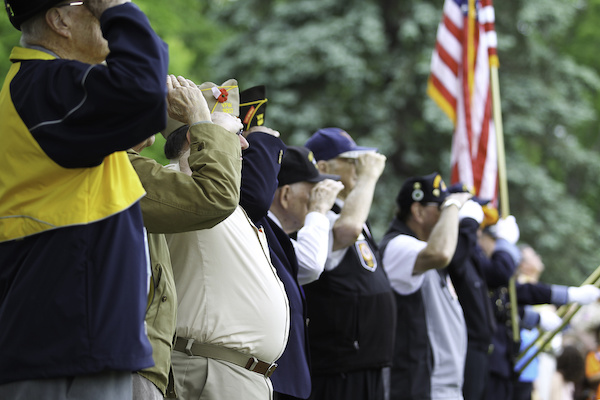Did you know you can experience signs and symptoms of PTSD months or years after experiencing combat-related trauma? A boisterous crowd, the sound of a car backfiring, or an unexpected smell can be enough to trigger a terrifying flashback. Suddenly, you may find yourself thrust into a world of stress, avoidance, and even physical pain.
You do not need to live that way. The first step toward treatment is learning to identify the signs of PTSD in veterans. From there, you can pursue a diagnosis, file a claim, and receive the therapeutic support you deserve.
We’ve created this guide to help veterans and those who love them learn to identify the most common PTSD symptoms.
Continue reading to learn the signs before PTSD causes a major disruption to your life.
Signs of PTSD in Veterans
Many years ago, physicians identified a condition they referred to as “Shell Shock” among combat veterans. We now understand that this syndrome is PTSD. The disorder results from experiencing trauma, whether or not the individual recognized an experience as traumatic at the time.
The American Psychological Association defines trauma in the following way:
Trauma is an emotional response to a terrible event like an accident, rape, or natural disaster. Immediately after the event, shock and denial are typical. Longer-term reactions include unpredictable emotions, flashbacks, strained relationships, and even physical symptoms like headaches or nausea.
Military combat exposes individuals to many traumatic events. While veterans are more likely to develop PTSD than civilians, not all veterans develop the condition. Only 7% of veterans experience symptoms in their lifetime, compared to 6% in the general population.
There are five types of PTSD, but all PTSD symptoms fall into four broad categories, which we’ve described below.
Reliving the Trauma
One of the most common and disruptive symptoms of PTSD involves reliving the trauma. Many veterans identify triggers that cause a panic response. For example, a loud, sudden noise (such as fireworks) might cause a flashback.
These flashbacks can often feel real and include sensory details. They may cause veterans to become disoriented, triggering a fight-or-flight response. This response is frightening and uncomfortable for the veteran and those around them.
Many veterans also experience vivid nightmares. These can disrupt normal sleep and lead to poor general health.
Avoidant Behavior
Civilian life can be very different from a combat zone, but many details may still remind veterans of their time in the service. These reminders might cause discomfort, ranging from general fear to panic attacks. They may also trigger flashbacks.
Anything from a violent film to a crowded room can cause these feelings to arise. Even a simple conversation can be enough to cause scary, negative emotions.
Many veterans begin avoiding people, places, and experiences that cause these feelings. They may refuse to take part in therapy or support groups where someone may ask them to discuss their experiences.
Individuals with PTSD may inconvenience themselves to avoid any reminder of their trauma. This can lead to denial and hostility.
Changes in Mood or Personality
Loved ones often notice that, upon returning from service, a veteran “seems different.” It can be difficult to articulate the reason why.
Common mood and personality changes include:
- Increased introversion
- Less engagement with loved ones
- Lack of passion
- Lack of interest in hobbies
- Shallow conversation
- Overall negativity
- Insistence on doing things independently
- Heightened fear or startled response
Many of these symptoms mimic the symptoms of mood disorders such as anxiety and depression.
In some cases, however, veterans may try to go above and beyond to “prove” they’re fine. This denial can manifest in overextension, which is just as isolating as pulling away.
Other Physical and Behavioral Changes
Some symptoms don’t fall into the above categories but are just as disruptive and uncomfortable. Untreated mental illness can sometimes manifest as physical symptoms. This can range from somatic pain to tremors and restlessness.
Some veterans may attempt to self-medicate with substances such as drugs or alcohol. They may struggle to focus and perform at civilian jobs. Veterans with PTSD also have a higher divorce rate due to relationship difficulties.
It’s common for individuals with PTSD to receive a dual diagnosis. Post-traumatic stress disorder is often comorbid with depression, anxiety, and substance use disorders.
Understanding Treatment for PTSD
If you or someone you love is experiencing the above symptoms, rest assured that treatment is accessible and effective. Researchers are developing new treatment modalities every year.
Your PTSD treatment plan might include a combination of the following:
- Cognitive therapies such as CBT and CPT
- Prolonged exposure therapy
- EMDR therapy
- Narrative Exposure Therapy
- Medications
There is also evidence that virtual reality therapies can be an effective component of treatment. These brand-new approaches can expedite treatment through gradual VR exposure.
How to Get Help
For many veterans, the first step toward getting help is filling out a disability benefits questionnaire (or a VA DBQ). This allows you to submit medical evidence of your PTSD diagnosis. It serves as evidence for your claims and is the only way to achieve 100% percentage and total benefits for your service-related disability.
100% P and T benefits ensure you receive the highest benefit, making treatment more comprehensive and affordable.
Coaching is an excellent resource for veterans as they navigate this process.
The DBQ Is Key to Dealing With Stress
There is no need to live with the debilitating symptoms of post-traumatic stress disorder. Now that you are aware of the signs of PTSD in veterans, you owe it to yourself or a loved one to pursue a formal diagnosis. From there, you can fill out the DBQ and qualify for 100% p and t benefits.
A Veterans Educating Veterans coach is ready to help you receive the benefits you deserve. Once you reach out, we’ll connect you with a knowledgeable and compassionate individual who will answer all of your questions. Accessible, affordable treatment is within your grasp.

